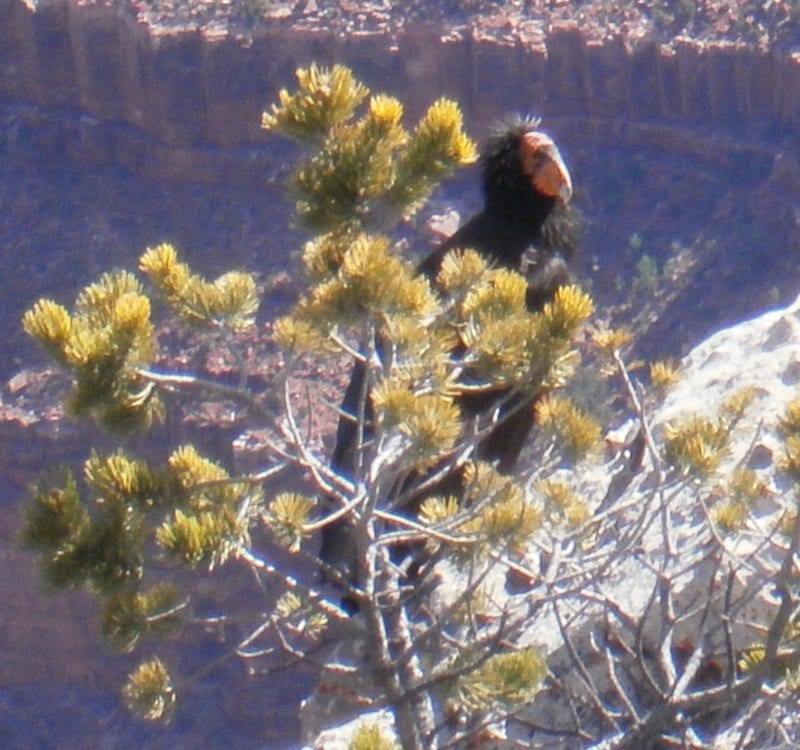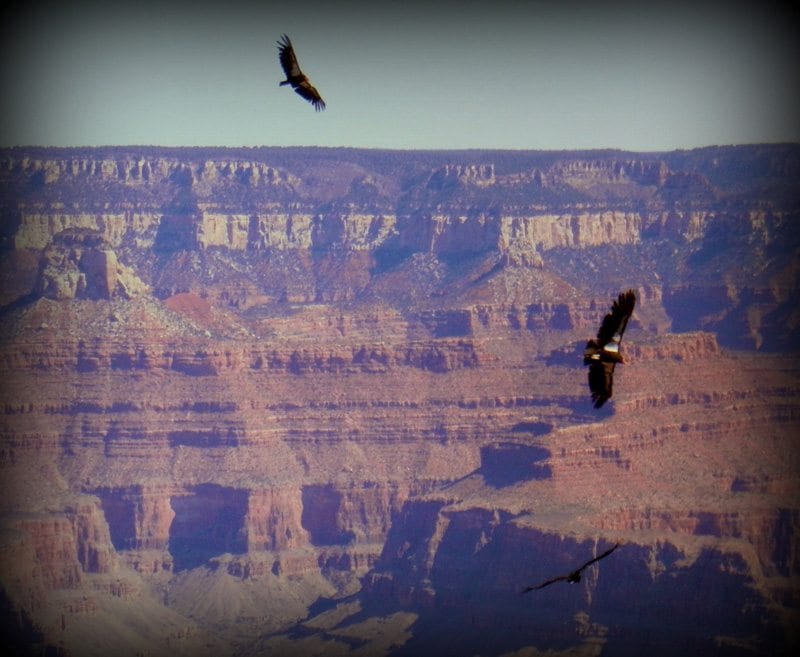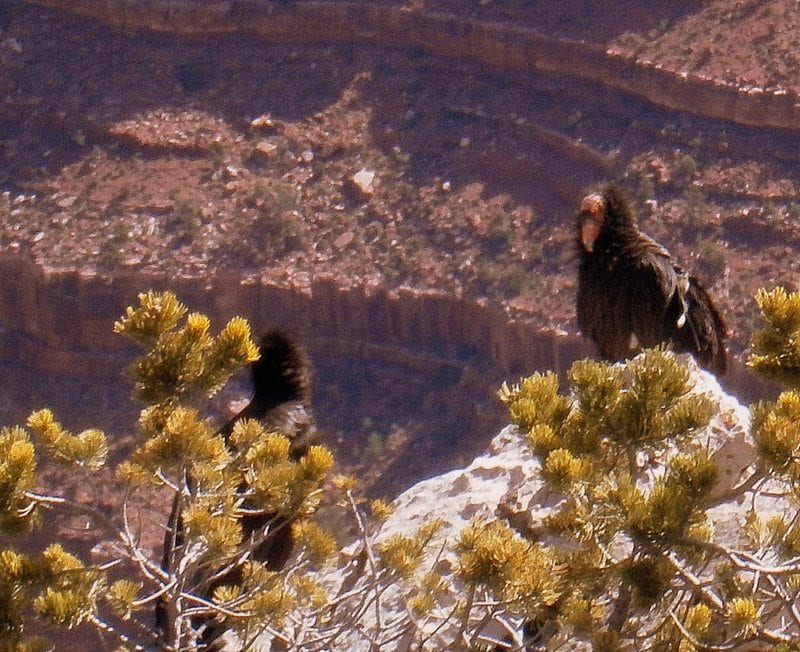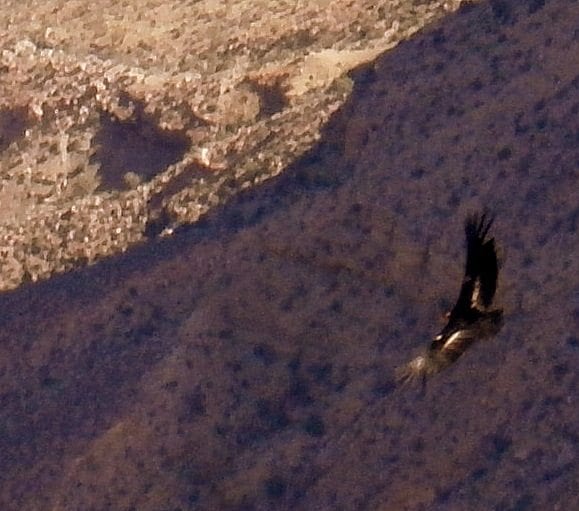Condors In The Grand Canyon
The Grand Canyon is stunning in size and grandeur. It contains 5 different ecosystems at an unusually close proximity: Riparian, Desert Scrub, Pinon-Juniper Woodland, Ponderosa Pine Forest, and Montane Forest. Soaring above all this splendor is one of the rarest birds; the California Condor.

The California condor was listed as an endangered species on March 11, 1967. Despite intense conservation efforts, the population dwindled to 33. The last remaining wild condor was brought into captivity in 1987. The surviving birds were bred in zoos in San Diego and Los Angeles. Through the captive breeding program, the number of condors rose. In 1991 condors were reintroduced into the wild. The first egg produced by a reintroduced condor was laid in a shallow cave at the Grand Canyon National Park. Today there are 405 living condors including 226 living in the wild and 179 in captivity. Condors are still considered critically endangered.

Identifying marks
Adult Condors have black feathers with a large triangular patch of white feathers on the underside of the wings. Their bill is ivory colored with a bald head and grey feet. Their skin color varies from reddish- orange to yellow. Young condors have dark brown feathers and a black head. Condors have tracking tags with numbers on the underside of their wings.

CONDOR FACTS
- The female is slightly smaller than the male.
- They have been known to fly as high as 15,000 ft. (4,600 km)
- The Condor is the Largest North American Land Bird
- It is one of the longest living birds in the world with a life span of up to 60 years
- Overall length of a Condor can range from 43 to 55 inches (109 to 140 cm)
- They can fly up to speeds of 55 mph (90 km/h).
- Their wingspan can range from 8.2 to 9.8 ft. (2.49 to 3 m).
- Their weight can range from 15 to 31 lb (7 to 14.1 kg)
- The leading cause of death for the California condor is lead poisoning (from eating carrion containing lead shot).



